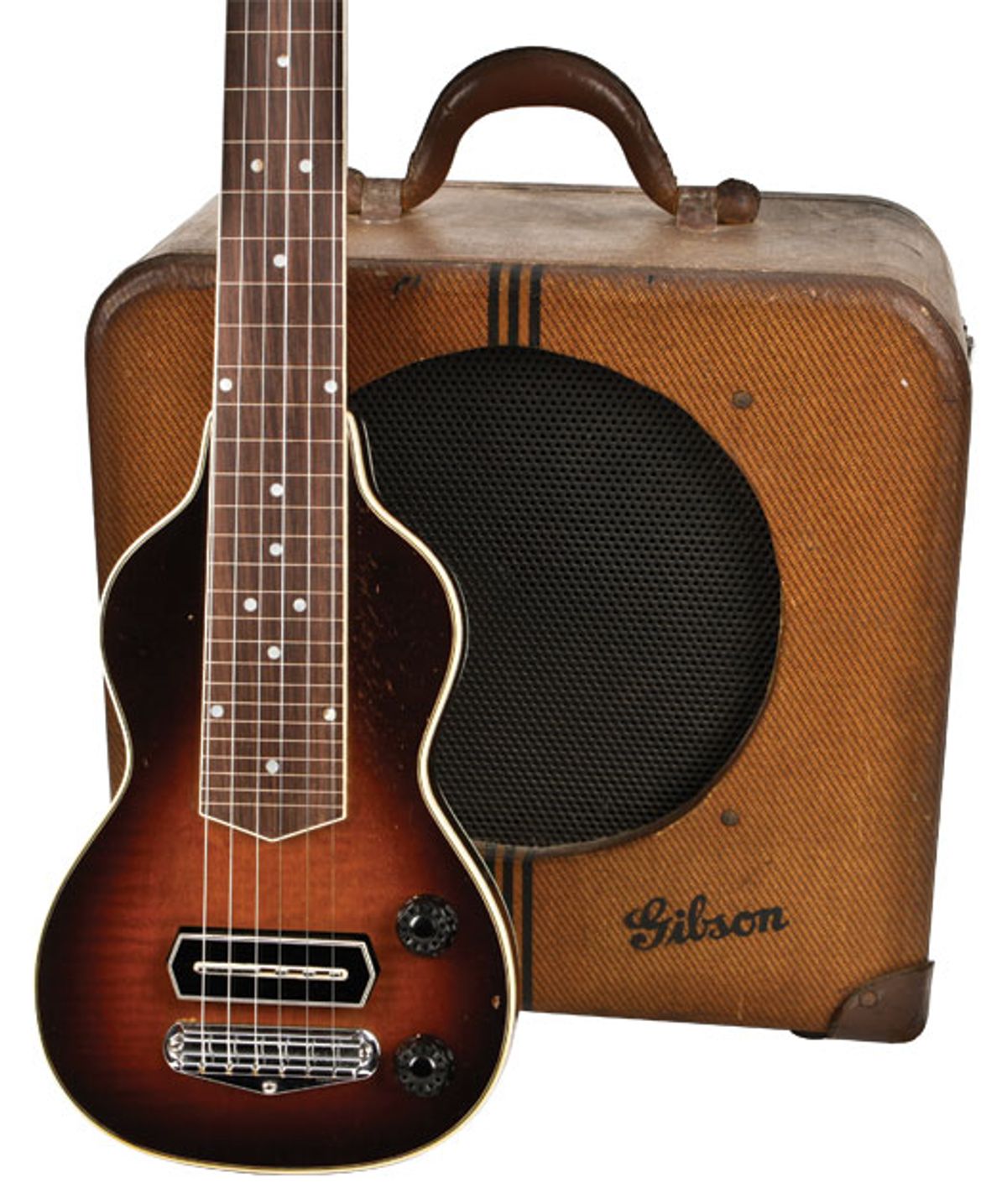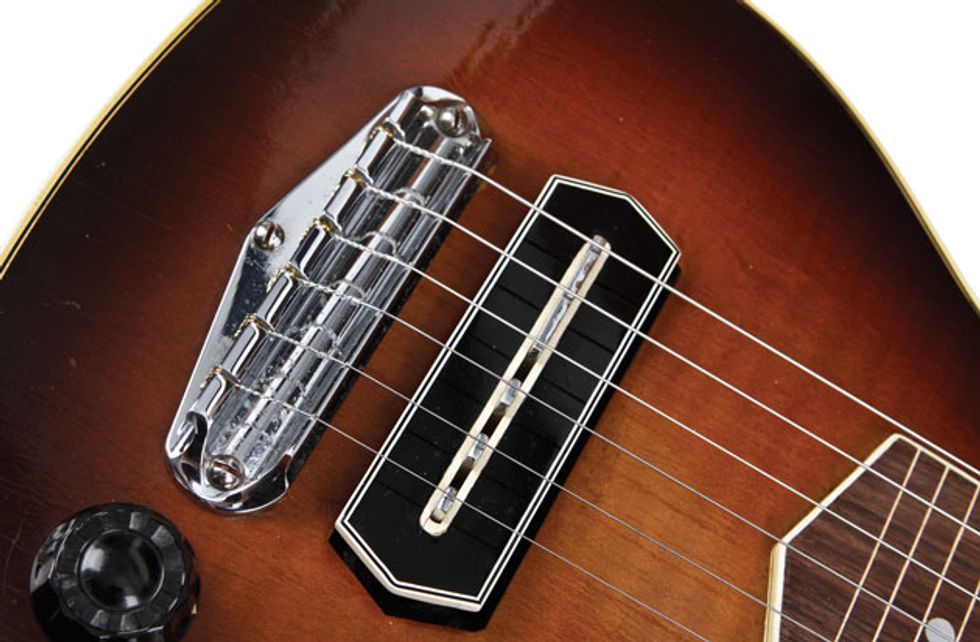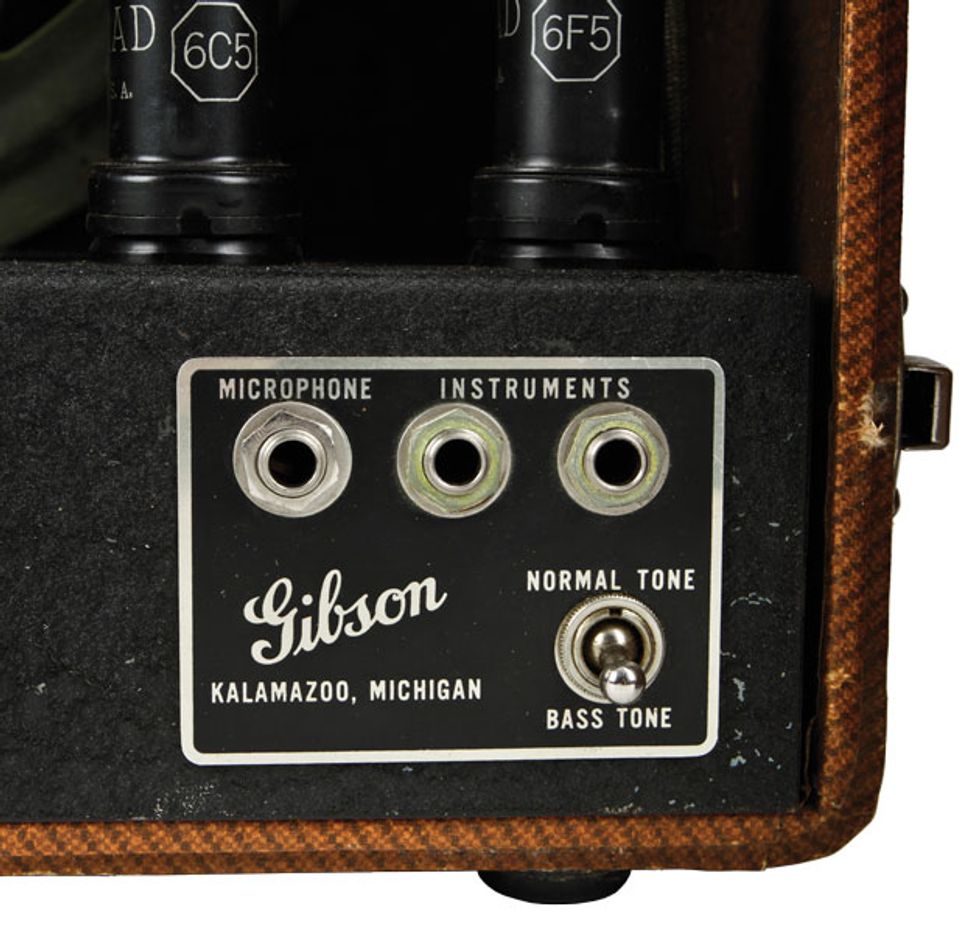Vintage Vault: 1937 Gibson EH-150 Guitar and Amp

The ES-150 guitar/amp set was Gibson’s response to the popularity of Hawaiian music—and a growing electric guitar market.
The popularity of Hawaiian-style music in the early 1900s created a demand for instruments specially made to accommodate Hawaiian guitar techniques. The top companies, Martin and Gibson, first began supplying separate devices to place on the nut to raise the strings high enough to play Hawaiian style, but eventually they designed guitars specifically for Hawaiian playing.
Gibson’s earliest Hawaiians were the HG series of 1929, followed by the Roy Smeck 12-fret models of 1934. By the time the Roy Smeck guitars became available, Hawaiian music had already begun to feature a new innovation: an electric guitar made by Rickenbacker. This guitar featured a magnetic “horseshoe” pickup to amplify the strings’ vibrations. This guitar could be heard more easily, and notes and chords could be effortlessly sustained.
Gibson’s Walter Fuller created the company’s iconic bar pickup.
Rickenbacker’s “Frying Pans” went almost unnoticed by Gibson until 1935, when sales shot high enough for Gibson to think it worthwhile to try an electric Hawaiian of their own. Gibson’s short-lived first attempt at an electric Hawaiian followed Rickenbacker’s lead and had a metal body. But the metal body had tuning issues and didn’t fit Gibson’s classic look, so by 1936 the EH-150 had a maple body and neck and was finished in Gibson’s traditional dark sunburst.
After initially trying to outsource the pickup design to Chicago’s Lyon & Healy (who did end up making the matching amplifiers), Gibson relied on one of its own employees, Walter Fuller, to devise the now famous bar pickup.
The 15-watt amplifier boasted two 6L6 power tubes and three inputs.
The 1937 EH-150 set pictured here has features consistent with the middle of that year. These include a headstock with a pearl Gibson logo and split diamond inlay (there was no inlay the previous year), multi-ply top and back binding (the top binding was single-ply in 1936), a back attached with screws (by 1938 the backs would be glued on), and a bar pickup with multi-ply binding (replaced by a U-magnet pickup in 1938). The amp had rounded corners (replacing the square corners of 1936), two 6L6 power tubes (earlier models used 6N6s), and a 12-inch speaker (previously a 10-inch). The amp’s power rating was about 15 watts.
The original list price of the EH-150 guitar and amp set was $150. The current value for a set in excellent, all-original condition is $2,000.
Sources for this article include: Gibson Electric Steel Guitars by A.R. Duchossoir, Gruhn’s Guide to Vintage Guitars by George Gruhn and Walter Carter, Electric Guitars and Basses by George Gruhn and Walter Carter, and Gibson Amplifiers 1933-2008: 75 Years of the Gold Tone by Wallace Marx, Jr.
Original price for set: $150 in 1937
Current estimated market value: $2,000


